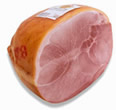
Grades 9-12

Don't have an account yet? Sign up for free
Don't have an account yet? Sign up for free


This lesson introduces regulation and information as two tools used by government to promote fair competition and complete information in a market economy. Using the 1906 Pure Food and Drugs Act as a case study, students explore the reasons buyers and sellers asked the federal government to intervene with respect to food safety and quality. In a second activity, students examine how government has improved consumer access to food and nutrition information, more specifically, how government requires sellers to provide accurate, standardized information and how it provides information directly through federal agencies. Students then use this information to make a choice between two food products.
In a perfectly competitive market system, all goods and services are allocated to their optimal use. In order for perfect competition to occur, certain conditions must exist:
 One role of government in a market economy is to facilitate an environment in which these conditions exist. To achieve this goal, government has two options. One approach is simply to provide information to participants in the marketplace. A second option is regulation – attempting to control the behavior of buyers and sellers. Rules governing what is available for purchase; the production and distribution process; and advertising; and what is available for purchase are all examples of government regulation. This lesson introduces students to federal regulation and information in one U.S. market – food. Students learn how these government functions help level the playing field for both consumers and businesses.
One role of government in a market economy is to facilitate an environment in which these conditions exist. To achieve this goal, government has two options. One approach is simply to provide information to participants in the marketplace. A second option is regulation – attempting to control the behavior of buyers and sellers. Rules governing what is available for purchase; the production and distribution process; and advertising; and what is available for purchase are all examples of government regulation. This lesson introduces students to federal regulation and information in one U.S. market – food. Students learn how these government functions help level the playing field for both consumers and businesses.
The FDA does many good things for American consumers and business, but it uses many resources in doing it. Debate whether it goes too far or not far enough.
Food Labels
Activity 1: Food Safety and Quality
[note you may want to provide your students with this printable list of definitions to use as a reference as they work through this lesson.]
Have students work in teams or groups to answer questions on the "The Struggle for a Federal Pure Food Law" worksheet concerning the struggle for passage of the first food safety laws. If computer access time is limited, you may want to print out copies of these two FDA Consumer articles needed to answer the worksheet questions. Also, to better organize this information, have the students fill out this data retrieval chart involving major advances in food safety and quality.
Following the completion of the activity, go over the worksheet with the students. Answers (see "Answer Key") will vary, so consider having students compare their responses. During this discussion be sure to cover the following topics/questions:
 sugar water or less expensive juices, adding water to milk, and adding soybean meal to hamburger.] Point out that in cases of misbranding, a food is not adulterated, but the consumer is deceived. For example, in 1993 the FDA seized 2,400 cases of Procter & Gamble’s Citrus Hill orange juice which used “fresh” on the label when the product was, in fact, produced from concentrate.
sugar water or less expensive juices, adding water to milk, and adding soybean meal to hamburger.] Point out that in cases of misbranding, a food is not adulterated, but the consumer is deceived. For example, in 1993 the FDA seized 2,400 cases of Procter & Gamble’s Citrus Hill orange juice which used “fresh” on the label when the product was, in fact, produced from concentrate.[Note to teacher: Food additives which are toxic or found to be allergens are not subject to the Delaney amendment. These are not banned from the market but treated with either warning labels or through allowable threshold levels. For example, in 1986 the FDA adopted a regulation limiting the use of sulfating agents. The regulation specifies that sulfites must be declared on the label if they are present above given levels.]
Activity 2: Information for Making Choices
You can print copies or direct your students to the following website to learn how to understand and use the nutrition facts panel on food labels . Have students fill in this data retrieval chart to help them organize what they have learned about food labeling acts in the United States. Then, have the students work individually or pairs when comparing two similar food products using package information and the "Reading the Label" worksheet.
When all students have made their choices, ask them to report their decisions to the class and the reasons for their choice. Students will likely be surprised by some of their findings. Products labeled "low-fat","low-sugar", or "low-salt" may reveal trade-offs in terms of another element. For example, low-fat cookies may have more sugar than regular cookies. When comparing organic with non organic foods, students may also discover there is typically little nutritional difference between foods in the two categories.
From this examination of regulation of the nation’s food supply and government’s efforts to expand the knowledge available to people choosing making foods, it is possible to see why both buyers and sellers sometimes ask government to intervene in the market economy. The creation and enforcement of rules reduces the chance that consumers will be harmed as a result of a purchase. Full information reduces the miscellaneous of our nation’s economic resources and helps consumers maximize personal satisfaction. Businesses value regulation and information because it instills consumer confidence and promotes fair market competition.
Links to sites where students will find a wealth of information on these topics are provided in the extension activities section of the student lesson page.
Assessment tools are provided at the end of each activity.
The questions in the Activity 1 Worksheet – The Struggle for a Federal Food Law are structured so that there are 10 responses that can be equally weighted for scoring on any multiple of ten scale (e.g., 10 points, 20 points or 100 percent).
Likewise, the Activity 2 Worksheet provides an evaluation tool. By giving question eight a value of three points, scoring can be based on a 10-point scale. Students may be awarded extra points for quality in their written explanations and oral presentations.

Grades 9-12

Grades 9-12

Grades 9-12

Grades 9-12
